AudioCulture
The noisy library of New Zealand music
Te pātaka korihi o ngā puoro o Aotearoa
Danse Macabre
Their roots lay as so many of the emerging groups did in the incubator of the Auckland punk scene at Zwines in 1978. Stepping out first as The Sloth Creatures, their initial line-up was guitarist Wes Prince, drummer Roddy Carlson, bass player Tony Ryan and singer Grant Latimer.
As fans they had followed The Scavengers and Rooter and hung out with The Stimulators. Now they were playing the songs of the new punk vanguard – The Clash, The Jam, Stiff Little Fingers and Wire – at city parties and at South Auckland’s infamous Dude Ranch, on farmland near where the Manukau City Centre now sits.
“They were notorious, acid-drenched parties,” says Wes Prince. “There was a regular series there in 1979 with groups like The Stencils, The Respectables, The Secret Agents and South Auckland groups The Wasted and The Smith Brothers – eight or nine groups. The Stencils, who featured Mark Clare, later of The Newmatics, went down really well. The Brunettes with Mike Lesbian were doing more obscure covers of groups like Suicide Commandos. The more obscure the record the better.”
The Sloth Creatures began playing in the inner city in April 1980, at the Liberty Stage in the Edinburgh Castle Hotel at the top of Symonds Street with The Androidss, The SOBs, The Respectables and The Stencils.
In August 1980, Latimer left the band and the remaining trio changed their name to The Kadets. The new line-up debuted, supporting The Valentinos and Techtones, but Prince soon tired of singing and wanted to concentrate on guitar. Enter Nigel Russell, bass player of The Spelling Mistakes, a popular Auckland pop-punk group just about to keel over. He’d answered the group’s ad in RipItUp, the only person that did so, and joined in October 1980.
Danse Macabre, as the group was now calling itself, debuted at The Windsor Castle in 1980.
“They needed someone to fill out the sound,” says Nigel Russell. “I was interested in synthesisers and that aspect of sound making. My first synth was a Wasp manufactured in Britain. It didn’t have a keyboard. It had a touch strip. It had quite a fat sound and was capable of some pretty gnarly noises. The synthesiser was being pitched as egalitarian. An instrument for the people.”
Nigel Russell was a more than competent vocalist. He had spent time in choirs and 18 months in the University Singers under Peter Godfrey. He brought a good set of contacts to further ease the way into the busy Auckland live scene enabling the band to effectively manage itself.
Danse Macabre, as the group was now calling itself, debuted at The Windsor Castle in late 1980. In early 1981, they were on at the small Aerial Railway stage at the large Sweetwaters outdoor festival south of Auckland. In mid-February you could find them at Auckland underage venue XS Café with fellow post-punks Herco Pilots (who included Nigel’s brother Harry Ratbag on bass) and fun group Vivid Militia (with a very young David Wood, later of Straitjacket Fits, on bass).
Their first demos were recorded in early 1981 at Harlequin studios with Lee Connolly, a UK producer/ engineer who had previously worked with Factory Records in-house producer Martin Hannett: the songs were ‘Torch’, ‘Conditioner’ and ‘Shred’.
They were listening to the freshly released Joy Division canon, 23 Skidoo, A Certain Ratio, Tuxedomoon, The Scars, Killing Joke, Echo and the Bunnymen, Cabaret Voltaire, Suicide, and The Comsat Angels, and rifling through the collection of 1ZM DJ Barry Jenkin.
“We were lucky with the close links Nigel and Gary Russell had with Barry," says Wes Prince, "who had a guy in England, who would go around buying records and sending them airmail to him every week.”
The new group were gearing up for a big show at Mainstreet following early supports at the Gluepot in Ponsonby and The Windsor Castle in Parnell when Tony Ryan disappeared. His bandmates searched in vain for the errant bass player and the shows were cancelled.
Danse Macabre went into panic mode. They had more shows lined up. Nigel quickly found Ralph Crump, nephew of writer Barry Crump, who’d played in Buster Keys, a West Auckland band that had recorded several demos.
“It came together really quickly," says Wes Prince. "It was an amazing period of creative foment for us. We wrote about ten originals. We were playing them with A Certain Ratio’s ‘Shack Up’ and working towards Rumba Bar shows in late April. We redeemed ourselves. That the beginning of our success.”
Early May, Danse Macabre returned to Mainstreet to support Australian rockers Midnight Oil. Terry Condon, head of Stunn Records, the label that released The Cure in New Zealand and Australia, was impressed. He asked the group to record some demos, including the never-released ‘Ancient Monuments’, for Reaction Records. The new label was a joint venture between Mandrill Studios and PolyGram Records, run by Trevor Reekie.
“Trevor had just come back from the United Kingdom and seen us at the Reverb Room," says Nigel Russell. "He’d landed a gig with Terry Condon running Stunn Records here. They wanted to get something local going and scouted us and Penknife Glides. We did some demos at Mandrill Studios that were rejected, live to 2-track stuff, but they persevered.”
The hectic live schedule in July continued with three nights at the Reverb Room and an afternoon show at the Rumba Bar.
The hectic live schedule in July continued with three nights at the Reverb Room and an afternoon show at the Rumba Bar, followed by a further run there with Alms For Children and Herco Pilots.
Auckland Star journalist Louise Chunn (sister of Mike and Geoff Chunn of Citizen Band and Split Enz) saw them with Herco Pilots a month later (on the 27th) at the Station Hotel.
“Let’s face it,” Chunn wrote, “New Zealand follows more trends than it sets. As each musical style blossoms in London, or maybe New York. So it is eventually emulated by one or other local band. We’ve had punk, ska, rockabilly, and now a “serious” synthesiser band. Although there are others who use the instruments, Danse Macabre come closest to the British leaders in the long fringe, grey-coat brigade.
“They don’t fit anyone’s exact dimensions, but in an all-original repertoire they come close to the sombreness of Joy Division, the melodies of later Orchestral Manoeuvres In The Dark and The Cure and even the Manchester bands like Echo and the Bunnymen (who were from Liverpool).”
She further lamented the distance between group and audience and their stage act’s dry ice and lights.
“I don’t think we modelled our sound on any one group," says Wes Prince. "People used to accuse us of modelling it on Joy Division. We had about three or four of their songs in our repertoire for a short period of time. We wanted a narcotic effect in a trance sense, and any group that could get us there was grist to the mill. We were after textures and rhythm – so it was good having a synthesiser to weave those sounds together.
“We always had the best PA we could afford. Always had the best lights we could afford. We structured our sets carefully right from the early days. We’d think about the keys of certain songs. We’d never follow a song with another in the same key. We always built the sets up from slow and atmospheric. We staggered our sets to fast. Finished with ‘Torch’. We realized we had to draw people into our sound to win them over.
“We used dark, sombre colours in lights for atmosphere. That worked well at the Rumba Bar. The smoke machine we used was a little bit too much. People were coughing and running out.”
In August Danse Macabre began recording their first EP at Mandrill Studios in down time with studio owner Glyn Tucker Jnr, a former pop star in the 1960s with The Gremlins and as a solo act.
It was time to take their sound to Christchurch. In early September they played with kindred spirits Herco Pilots and Alms For Children at the DB Gladstone Hotel.
“That was a trains, planes and automobiles tour,” says Nigel Russell. “Danse Macabre took the gear in the van. All cramped up. A couple of Alms For Children went down on a train. The balance and a Herco or two went down and back with Barry Jenkin, who’d chartered a Cessna.” Part of Jenkin’s job when he was at Radio Hauraki was doing the beach patrol radio report and the DJ was (and still is) an enthusiastic pilot.
Danse Macabre were well received at the DB Gladstone, with the exception of a small group of boot boy hecklers.
“There was a skinhead, who’d come down from Wellington," says Nigel Russell. "By the time we’d finished our set he’d thrown a bottle, an ashtray, and four glasses. The only thing he didn’t throw was the table.
“We went to a party after the Friday show. There was some cactus on the go as there always seemed to be in Christchurch. We came out after and all the guitars were gone. We had to go to the central police station. This was at the height of the Springbok Tour. We did radio appeals and got most of it back. A photographer friend lost his cameras.”
On their return to Auckland, Danse Macabre finished recording their Reaction Records EP Between The Lines.
On their return to Auckland, Danse Macabre finished recording their Reaction Records EP Between The Lines – and played the Reverb Room (the old Liberty Stage) with new group Missing Tremble. They appeared on RipItUp’s second ever colour cover in November with Penknife Glides, a mod act with ska and reggae affectations who’d also signed to Reaction Records. The cover story highlighted the groups’ upcoming Positive Reaction national tour.
Before they left Danse Macabre played the sold out "Ballroom Blitz – A Night Of Heroic Proportions" at Mainstreet on November 17– a fashion show cashing in on the New Romantic craze coming come out of London. They soon realised it was problematic, as the group’s modern sound, synthesiser, and Nigel’s fashion sense led to easy inaccurate stereotyping.
The Positive Reaction Tour kicked off at Macey’s nightclub in Hamilton in late November. The night went badly for a crocked, feverish Wes Prince. From there the groups headed north to Whangarei’s DB Onerahi, where frustrated roadie Tucker Peters (the brother of long-standing politician Winston Peters) tore up the contract in front of the manager. Then it was south again to Mainstreet in Auckland on December 2, the following evening.
“We had to play at the Hillsborough in Christchurch on the next Monday," says Nigel Russell. "The crew left with the gear in a truck and we followed in a rental van. The gear stick sheared off the truck, so we flew the PA to Christchurch with the crew.”
Danse Macabre played a further Garden City show at Canterbury University, before heading south to the Terminus in Timaru and the Captain Cook Tavern in Dunedin, before rebounding to Christchurch’s Star and Garter. Then it was back across the Cook Strait to Lower Hutt’s Quinn’s Post.
That evening Danse Macabre watched the video of ‘Between The Lines’ on TV rock show Radio With Pictures in a Wellington fish and chip shop. From there it was up the east coast to Napier’s Mayfair, and the isolated coastal city Gisborne, where the groups were well received, which helped to offset the tour’s considerable losses.
On December 17, Danse Macabre’s Between The Lines EP (‘Intro’/ ‘Torch’/ ‘Conditioner’/ ‘Between The Lines’/ ‘E.C.G’/ ‘Outro’) entered the New Zealand Singles Chart where it stayed for six weeks, rising to a peak of No.15 and selling over 2,000 copies. In Australia it was released on Stunn Records.
Wes Prince: “On ‘Between The Lines’ we set out to write the perfect pop song, but not write a pop song – an anti-pop song, along the lines of what someone like Orange Juice would write, or Josef K, and people like Vic Godard, who almost sabotaged their own careers.
“'ECG’ is about that feeling of dread. It’s about someone getting killed by a gang. It’s inspired from all those days when you’d go up to Liberty Stage on a Saturday afternoon, where you’d be dodging the bottles. People used to throw bottles at people across the other side of the room. There’d be this really heavy atmosphere, especially at The Features gigs. But it felt so normal at the time. It created an incredible sense of energy, which went into the music.
“Barry Jenkin used to play the first version of ‘Torch’ all the time. He used to really like it. But he couldn’t believe it when we did the version at Mandrill. He didn’t like it at all. He said it was ‘too produced’. That I’d missed out one of the harmonics in the introduction.”
Danse Macabre book-ended a strong balanced collection with two snatches of Can-influenced drift and tumble named ‘Intro’ and ‘Outro’.
In England John Peel was playing ‘Conditioner’ on his influential Radio One show.
The Positive Reaction tour ended in Auckland at the New Station Hotel on December 19 and 20. Crowds were uneven, but on the whole it was a success. The groups had gelled personally. They’d exposed their sound and show in as many of the nation’s cities as possible, and the response had been acceptance. And Danse Macabre had a hit in the charts. Meanwhile in England, John Peel was playing ‘Conditioner’ on his influential Radio One show.
Then the group’s van with all the their gear in it was stolen from outside the Station Hotel after the final show while Wes and Ralph were inside having a drink with Street Talk’s Mike Caen.
The equipment was too hot to be sold in New Zealand. The second hand market in Sydney seemed the most obvious destination. The group were quickly on the phone to Air New Zealand to see if any musical equipment was due to be freighted to Australia. There was. Nigel staked the container out, but the gear never arrived. Only the van was recovered.
Danse Macabre had shows lined up at Sweetwaters in late January 1982. They borrowed gear from a supportive Auckland music community for their opening night show on the main stage before playing later on the Aerial Railway stage to an initially sceptical crowd, ultimately winning them over.
They were back at the Reverb Room in early February, and again mid-month with Green Eggs and Ham, and Transmission. The following night the Auckland post-punk community rallied for a benefit night at Mainstreet on Sunday February 21 to raise money for new equipment for Danse Macabre. Blam Blam Blam, The Newmatics, Prime Movers, The Screaming Meemees and Danse Macabre played.
In other parts of the Auckland post-punk scene Danse Macabre were experiencing a backlash.
In other parts of the Auckland post-punk scene Danse Macabre were experiencing a backlash.
“We were no longer regarded as an underground group because we were connected with that label, Reaction Records," says Wes Prince. "We wanted to be professional, not raw. With a not slick, but powerful and crisp sound, like The Comsat Angels.
“I didn’t want to be escapist. I was trying to go against the whole pop mentality and the commercialisation of music, which wrecks it. And while we were playing for money and actively searching out gigs, we were reacting against it by not wanting to be like any other group, by being in the vanguard of the underground.”
Danse Macabre continued to play regularly around Auckland. At the Station Hotel. In the Auckland Town Hall with mainstream rockers DD Smash and pop stars The Screaming Meemees. There was an early April show at the Rumba Bar before returning to Mainstreet on Easter Monday for an underage rage with The Screaming Meemees, Prime Movers, The Swingers and The Gurlz.
Rock journalist Colin Hogg was impressed and said so in the Auckland Star:
“Next came the class act of the night, Danse Macabre operating from another musical world altogether. Driven by the sharp dangerous drumming of Roddy Carlson and the awesome rumble of Ralph Crump’s bass, Danse Macabre’s original music looms large. Weston Prince’s jagged guitar lines add jabs of lightning to their swirling mix of atmosphere and melody, while Nigel Russell has every reason to look confident at the focal point.” Auckland Star had already declared ‘Between The Lines’ the second best local record of 1981.
Nigel Russell worked for a Roland synthesiser importer in Auckland, which gave him continual access to the fast developing sound technology. When Roland’s branch agent in Christchurch went on holiday Nigel was shipped south for three weeks. Cue another South Island excursion for Danse Macabre.
Danse Macabre flew south after three shows at the Reverb Room to play the Star and Garter in Christchurch in late April followed by a stint at the Captain Cook in Dunedin in early May.
Wes Prince: “The second tour was artistically successful, but a financial disaster. We flew down from Auckland to Christchurch and played at the Star and Garter. We rushed through our set in two-thirds the time. The amp fell on Ralph’s foot from about six feet. He didn’t miss a beat.
“We hired a truck and drove all the equipment down to Dunedin and played four shows. We had The Stones and The Verlaines supporting us. We felt solidarity and camaraderie with those groups. The Cook was packed every night. Some people came to all the shows.”
Danse Macabre began recording their debut album with Trevor Reekie and Tim Fields at Mandrill Studios.
Back in the Queen City, Danse Macabre began recording their debut album with Trevor Reekie and Tim Fields at Mandrill Studios. “We had a set we wanted to record while it was still hot," says Prince," but we left it a bit late because we’d played that set so much.” Four songs were recorded over the winter months.
Danse Macabre joined tour mates Penknife Glides at Mainstreet in late May and in early June they teamed up with The Screaming Meemees, a reformed Newmatics and Rank and File, to play The Right Royal Rage at His Majesty’s Theatre.
“We really shone in those proper concert venues," says Wes Prince. "Our sound was tailor-made for that cavernous quality. We were the original stadium rockers.”
They returned a favour late that month at a benefit concert for Blam Blam Blam after a van crash cost bassist Tim Mahon two fingers. Danse Macabre joined The Screaming Meemees, Prime Movers, The Dabs, The Bongos and Blond Comedy at Mainstreet.
They were back there again, headlining this time, in early July, prior to a big Auckland Town Hall show for Greenpeace’s Save The Whales campaign.
The Auckland Star again singled them out for praise. “They were nothing short of exhilarating, climaxing with an angry new song, ‘Nexus’, and a classic old one, ‘Between The Lines’. A powerful band with a big musical future and a musical sensibility of mammoth proportions.”
Mid-month, Danse Macabre played a run with the wiry minimalist Eight Living Legs at Mainstreet, before shifting to the Reverb Room the following week for another three-night stand.
All that activity belied the malaise creeping into the band. The album recordings were fraught and the group wilting under the hectic live schedule, which they now began to ease up on.
Wes Prince: “It was the eighteen month syndrome. A year and a half where you build yourself up and get yourself known and if you’re not ready to take the next stage there’s nowhere to go but down.
“We didn’t write enough new material to keep the crowd coming back. A lot of our audience started checking out the new nightclub scene. We didn’t even put our full name on the advertisements in the Auckland Star, just DM with this symbol as if all our fans would know us. Another reason we didn’t play as much was that we were starting to lose money again. So everything started to hinge on that recording, it was either going to make us or break us.”
The album was to be a darker, “guitar” record. “People used to tell me the synthesiser drowned out the guitar live," says Prince. "They felt it was too dominant. We were trying to get the balance of sound right. Trying to get the power and to make a heavier kind of record. I felt the songs needed it. A lot of them were based around a guitar line. The synthesisers didn’t have a large role in it. But we just got into a rut with the recording. It was all done in downtime except a few afternoons.”
In August, two tracks, ‘Skyline’ and ‘Nexus’, were mooted as the new single. It didn’t appear. The recording continued and the group’s internal divisions widened.
“The album recording was an ordeal," says Roddy Carlson. "The initial recordings were too muffled. We were constantly trying to repair the sound. It was really difficult to persevere with something we felt was lacking in the first place.”
Wes Prince: “I was happy with ‘Web’. It should all have been as good as that. Synths complemented what I was trying to do beautifully. I played piano on that. ‘Sanctum’ has got the feel of our live performance. It was very powerful live. Andrew Page on 1ZM used to play ‘Nexus’ a lot. Those three stand out for me. ‘Terminal’ was improvised in the studio using a Mesa Boogie stack and playing a Gretsch semi-acoustic lent from Dave Bulog. DJ Barry Jenkin came in and helped us re-edit ‘Ambassador’. He changed the order of it.”
Upbeat tracks dominated. The slower moodier atmospheric tracks slated for inclusion were never recorded, says Wes Prince: “Songs like ‘Vestige’, which was a huge epic in the mould of ‘Conditioner’. It was very atmospheric and one of our best tracks. They would have made the album a more coherent statement.”
As the rest of the group mixed the mini-album, Nigel Russell spent a week in Rarotonga as an extra in the David Bowie movie Merry Christmas Mr. Lawrence.
Nigel Russell: “It was all me and them by then. They said I was trying to be a star of the band. I don’t know whether that was my dress sense or not. The riding boots. I was called to the public bar of the Station Hotel and sacked. It was nearly a complete surprise.”
Wes Prince: “It was the pressure of having to go on tour and having no backing at all. We had to go out and get jobs again. We were going to have to tour the record. We couldn’t see the next step. It came to a grinding halt.”
The group played packed farewell shows at the Windsor Castle in Parnell.
On September 24 and 25 the group played packed farewell shows at the Windsor Castle in Parnell. Last Request made a belated appearance in December and edged into the album chart at No.35 and falling out a week later.
Nigel Russell formed Car Crash Set with English ex-pat Nick Jenkins and Dave Bulog, who had played in Stranger Upstairs, a Danse Macabre support band. They all shared an interest in synthesisers and rehearsed at Progressive Studios, owned by Danse Macabre front of house engineer Terry King. In King’s studio Car Crash Set recorded the New Order influenced ‘Toys’.
After Jenkins returned to the United Kingdom, Nigel Russell was approached by Andrew Snoid (ex Whizz Kids/ Pop Mechanix/ The Swingers) to play in the fledgling Coconut Rough, but left after a couple of rehearsals to concentrate on the studio-based Car Crash Set. Their first release was the intriguingly titled ‘Outsider’ backed with ‘Fall From Grace’.
Danse Macabre reformed in 2005 in support of Between The Lines, a CD coupling of the group’s two 1980s releases. A reunion show at the Kings Arms in Auckland followed. They reprised their Positive Reaction Tour pairing with Penknife Glides at the same venue on May 11, 2013. Studio versions of unrecorded Danse Macabre songs ‘Vestige’, ‘Never’, ‘Entwined / Hymn’, ‘Memento’ and ‘Ancient Monuments’ were also recorded that month. The group, minus the overseas-based Ralph Crump, have been playing together again.
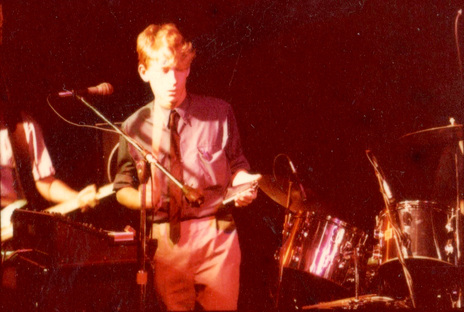
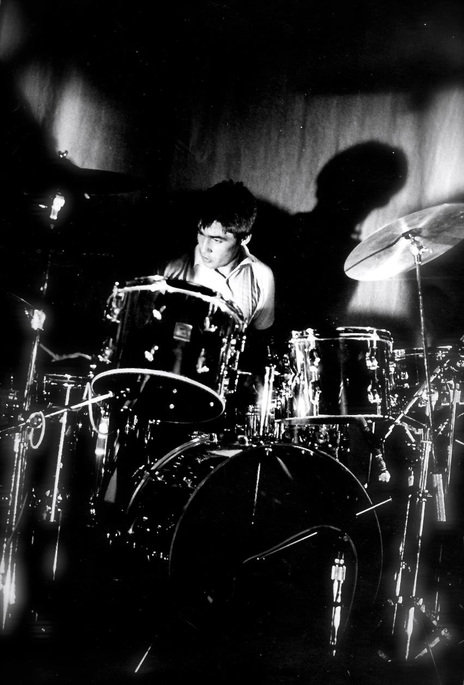
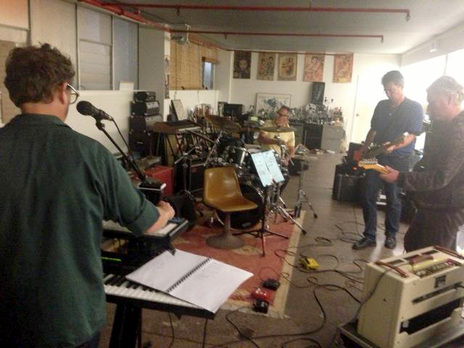
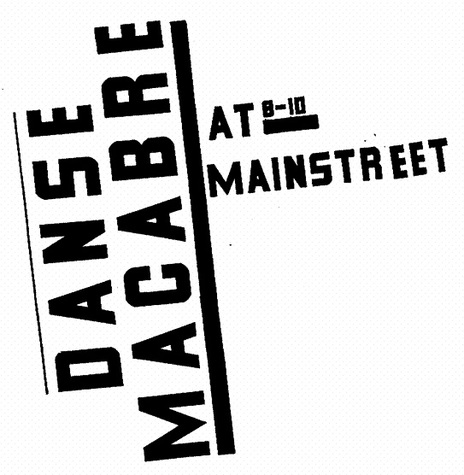
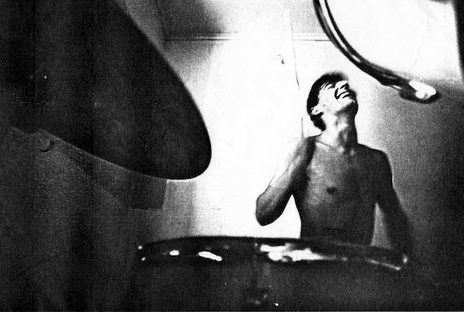
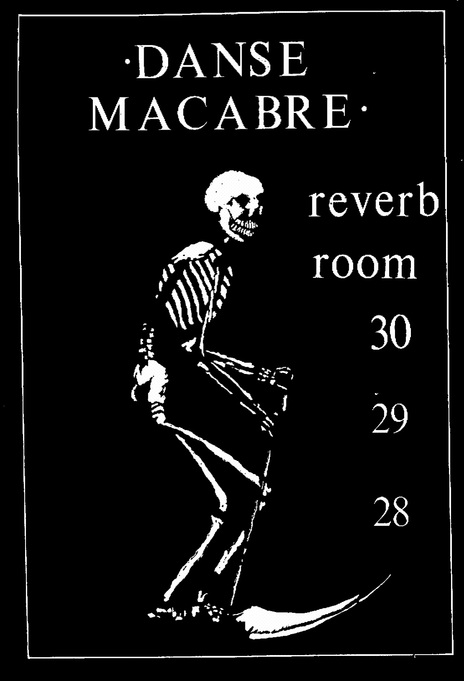
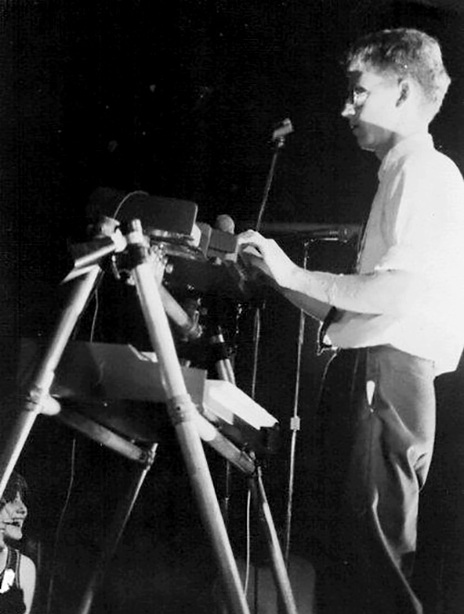
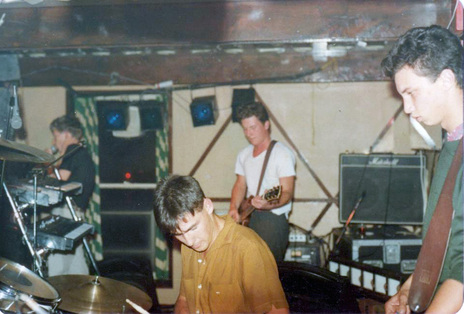
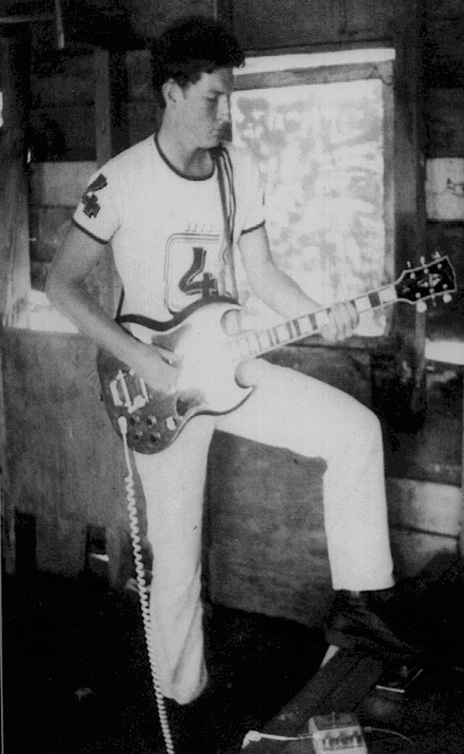
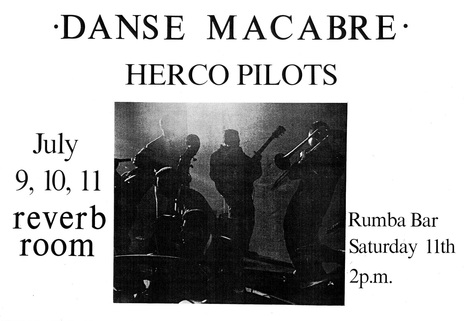
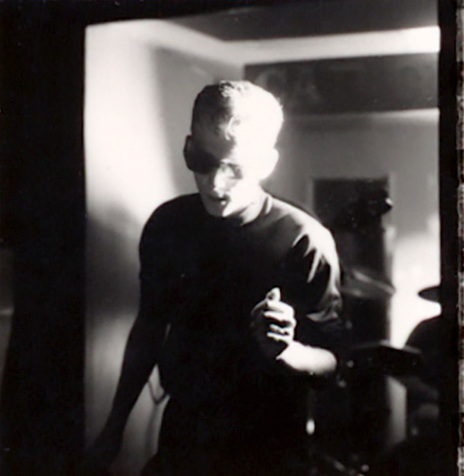
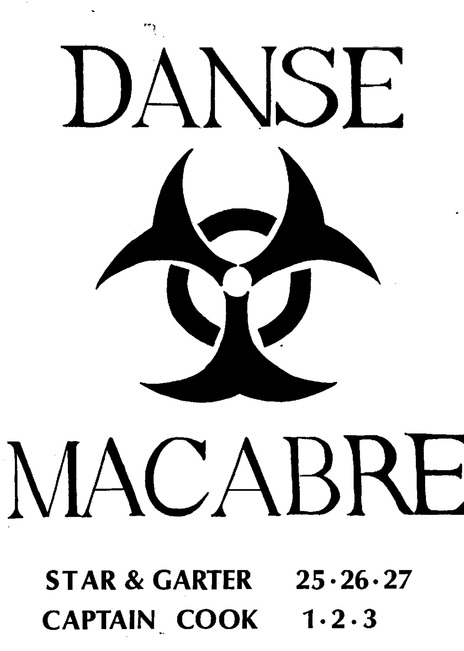
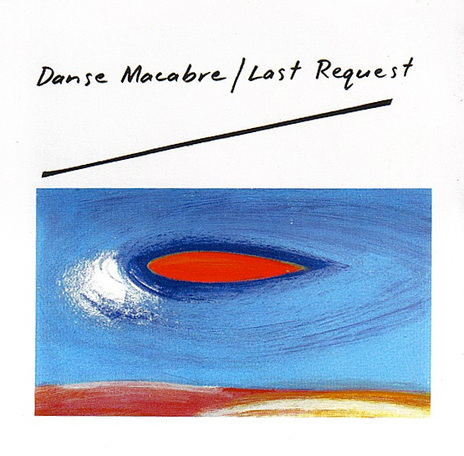
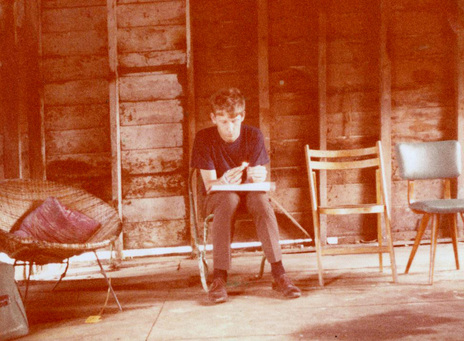
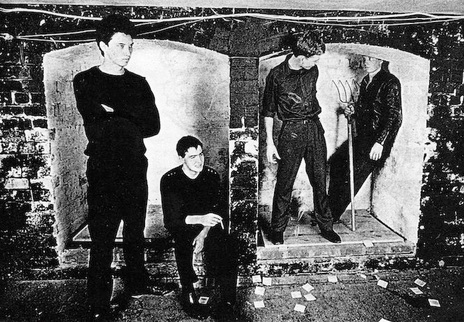
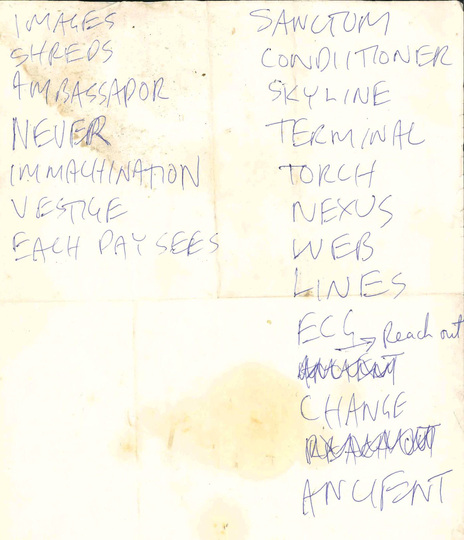
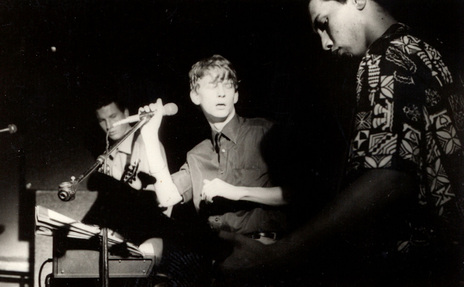
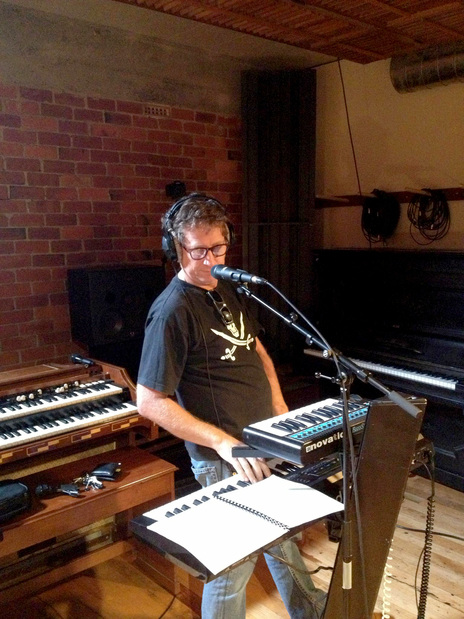
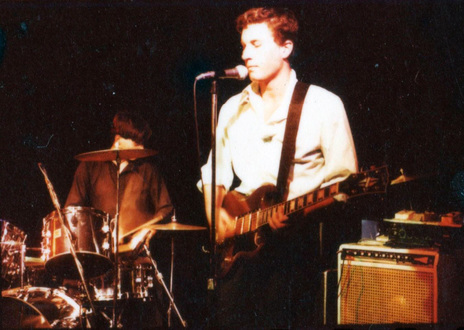
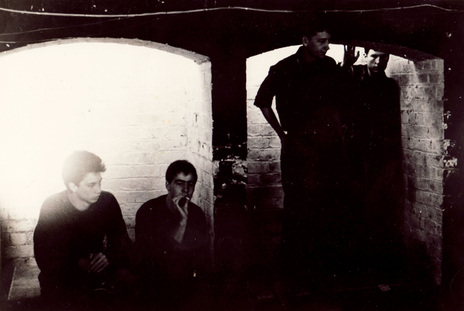
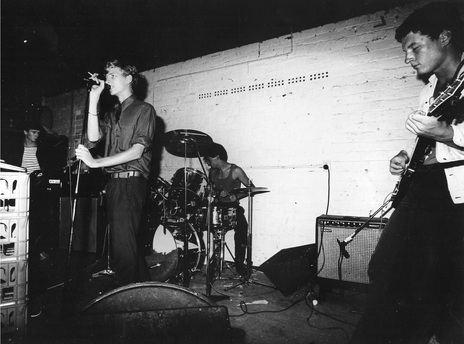
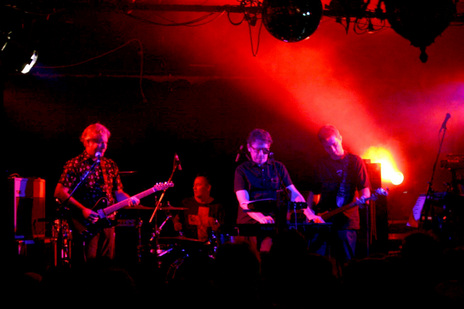
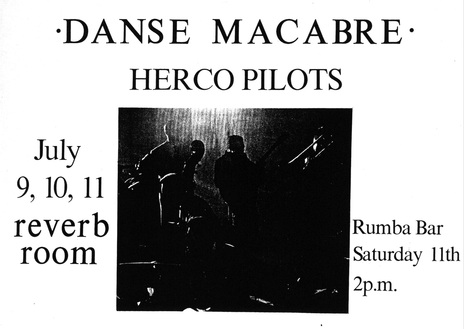
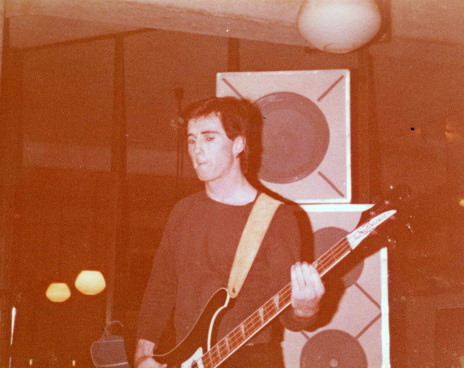
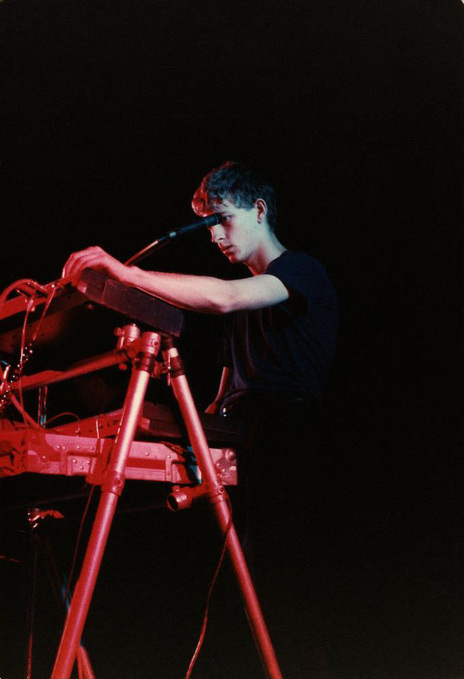
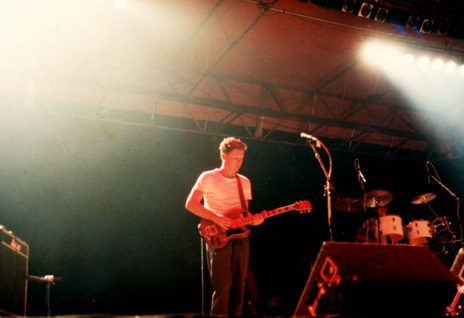
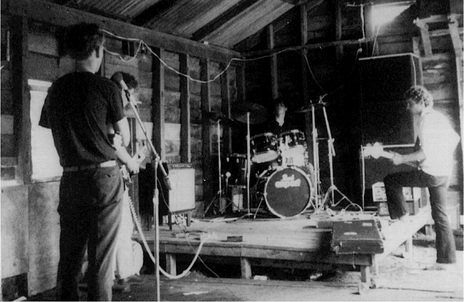
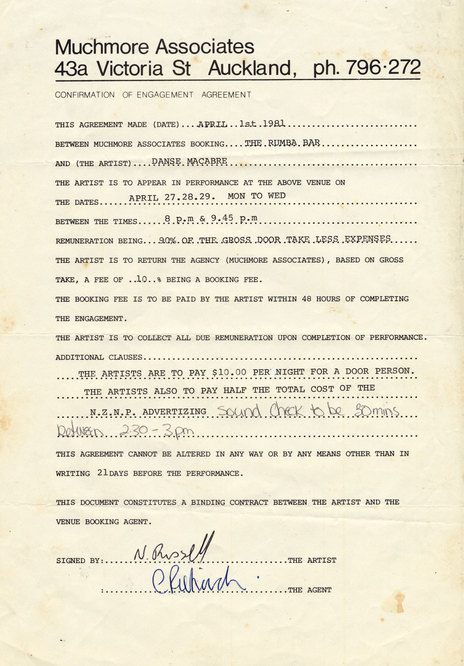
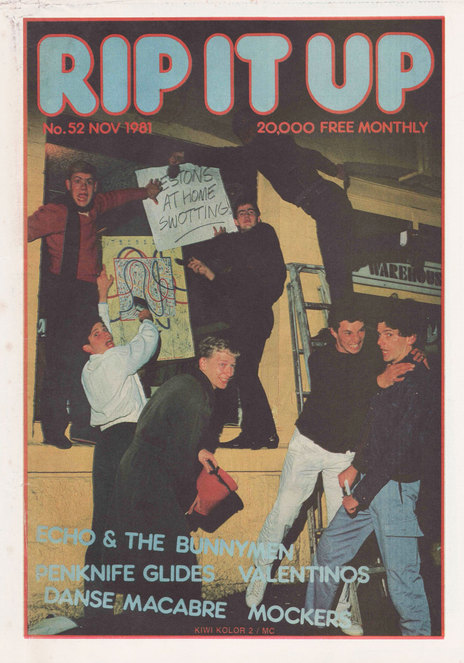
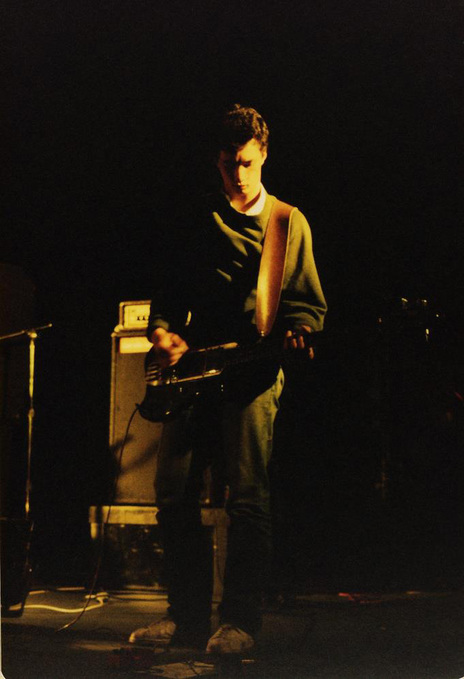
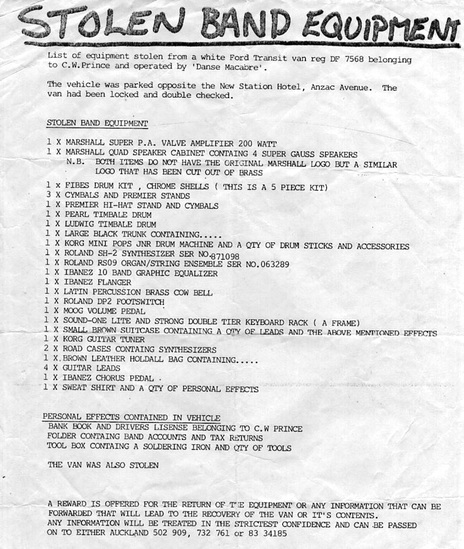
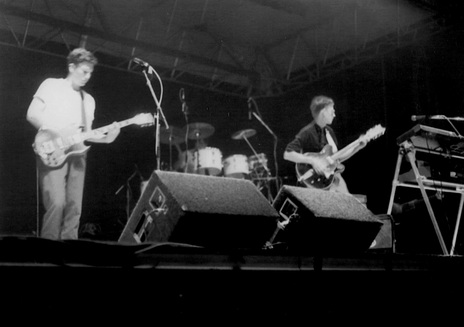
Tony Ryan - bass
Nigel Russell - vocals, synthesiser
Weston Prince - guitar, keyboards
Rod Carlson - drums
Ralph Crump - bass
Visit our sister site
NZ On ScreenMade with funding from
NZ On Air

